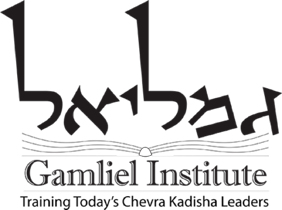Jewish Cemeteries – Green and Greener
By David Zinner
Cemeteries provide a place for burial and graveside rituals. The cemetery management maintains a system of plot identification and location, digs the grave for burial, and provides perpetual maintenance of the cemetery grounds.
Defining a Jewish cemetery is fairly straight forward. Jewish cemeteries are delineated areas of land that have been consecrated in a Jewish religious ceremony and where Jews will be, or already are, buried. It often has rules set by a body that has religious supervision. Cemeteries should be owned in perpetuity.
Many Jewish cemeteries have relationships with synagogues or Chevra Kadisha groups. These groups may have designated sections where they own burial rights. It is common for purchase of burial rights to involve a series of payments over time, negotiated rates, and negotiated restrictions such as requirements for liners, monument size, etc.
A Jewish Cemetery can be owned by a synagogue, by a fraternal society, or by an independent Jewish group. Some municipalities own cemeteries with Jewish sections. In many communities a large conglomerate has bought a Jewish cemetery, or started a Jewish section in their cemetery. Six U.S. states require that all cemeteries be owned by non-profit organizations – New York, Connecticut, Massachusetts, Maine, New Jersey and Wyoming
Whether Jewish cemeteries are owned by Jews or non-Jews, they usually guarantee that each group and its clergy are allowed the right to set rules governing its section. These section rules are subject to the cemetery’s overall rules. The rules governing the Jewish cemetery section should be created with deliberate process and should be public and available to members. These rules can cover issues of non-Jewish burial, intermarriage burials, suicides, cremations, liners, taharah and tachrichim, monument symbols, officiating, book burial, plantings, flowers, re-interments, and re-burial in Israel.
There is always a possibility that a cemetery will be sold. If it is sold to someone unfamiliar or uncomfortable with a relationship that guarantees control over religious rituals, the integrity of the Jewish cemetery may be at stake. Sale of a Jewish cemetery will have a very different impact than the sale of a Jewish funeral home. If a Jewish funeral home is sold, there are usually other options for a Jewish funeral. If a Jewish cemetery is sold, the Jewish community needs to be aware of the implications. To whom was the cemetery sold? What will happen to those already buried in the cemetery? Are stipulations in place to protect the sanctity of their resting places? Will the cemetery remain Jewish? Will the burial of non-Jews be allowed in the cemetery? If so, will this be handled in such a way that Jews would still be comfortable burying their dead and visiting their graves? If not, the future of the cemetery may be in jeopardy. Are there other cemetery alternatives available within a reasonable distance?
Should the synagogue consider buying the cemetery or securing its purchase as a separate entity? Establishing ownership, governance, management, accounting and reporting for a separate entity requires effort. Or should the Chevra Kadisha approach Trust for Public Land, or other land preservation organizations with the idea of Jewish cemetery that would preserve the land and generate income.
Why are green cemeteries desirable? Because a green cemetery provides a good counter to the argument that cremation is more environmentally sound than burial. We can control or have influence over land where we can demonstrate good stewardship of God’s resources.
It is possible to make an existing cemetery greener. Many older Jewish cemeteries require a taharah and tachrichim for burial. In a similar way, it is possible to set up cemetery rules that prohibit embalming. Exceptions might need to be created where embalming is required, for example where a person dies in another country and embalming is required for air transport.
Liners, or vaults, are concrete boxes that are placed in the ground before the burial. The casket is lowered into the box and the concrete lid is place on top. From the cemetery’s perspective, the purpose of the liner is to prevent the ground from slumping when the casket decomposes. But maybe it is possible to set aside some money into the perpetual care fund instead of investing in a liner. That money could be used to fill the ground and re-seed or re-sod after the ground settles. And it wouldn’t be outrageous for a cemetery to charge a small fee for not using a liner, to help it with some of the profit it forgoes by not selling a liner.
One very important by-product of this practice would be the elimination of encroachment. This happens when a liner is placed in the ground, but overlaps into the next burial space, thus preventing the next liner from being placed correctly. The problem of encroachment is at the heart of many recent suits against cemeteries, most notably the $100 million class action settlement against Menorah Gardens Cemetery in South Florida.
If you are going green, why stop with eliminating liners? Why not look at the Muslim practice of using caskets to carry the body to the cemetery, but not burying the casket. This is also the predominant practice in Israel and eliminates most of the slumping problem when a liner isn’t used.
Of course, eliminating caskets has an emotional, esthetic and financial impact. But the emotional and esthetic issues are probably no greater than when a synagogue standardizes on using a plain pine box instead of fancy caskets. The financial impact on the funeral home is not that great if we’re talking about the markup on a plain casket.
A third area that should be considered to greening an existing cemetery is plantings. Moving away from heavily fertilized grass and towards more native plantings, especially in fully developed cemetery areas, can provide many long term positive benefits. Not only does this reduce harmful runoff, but it can significantly decrease maintenance costs.
It is possible to make part of an existing cemetery greener. Many cemeteries have undeveloped land that could be transformed into a green cemetery section. This might be a good approach for a cemetery in a “less desirable” part of town. A green section could attract new buyers who might otherwise not be potential customers.
And it is possible to start a brand new green or even a woodland cemetery. Maybe a local farmer has land that is not suitable for crops, but would make a nice woodland cemetery. A long-term partnership would help the farmer diversify and would provide a likely source of labor and machinery to help with cemetery operations. It might also be useful to approach an existing land trust, or conservation easement organization about establishing a partnership.

